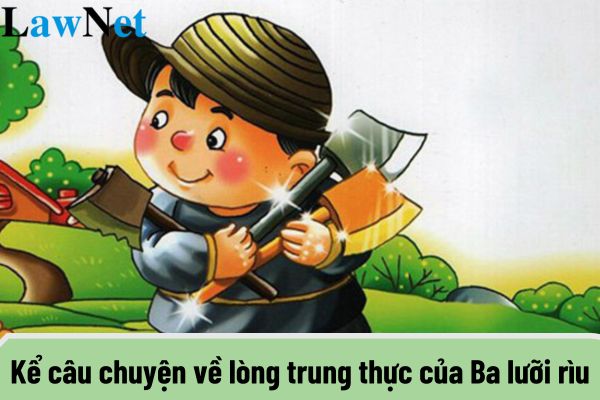What are the guidelines for telling honesty in the story "Ba lưỡi rìu"? How much text corpus is used in the 4th-grade Vietnamese language curriculum?
What are the guidelines for telling honesty in the story "Ba lưỡi rìu"?
The story "Ba lưỡi rìu" is a famous fable in Vietnamese folklore, delivering a lesson on honesty and integrity.
Definition of honesty in this story: Honesty in this story is demonstrated through the actions of the main character when faced with challenges and temptations. In the story, the farmer shows absolute honesty by not accepting what is not his, even though those things are very valuable. Despite having the opportunity to receive precious items, he remains steadfast in his principles and only accepts what he deserves.
4th-grade students may refer to the following guidelines for telling honesty in the story "Ba lưỡi rìu":
|
Guidelines for telling honesty in the story "Ba lưỡi rìu" The story "Ba lưỡi rìu" is a famous fable in folklore, teaching us a lesson on honesty and uprightness. |
*Note: The information is for reference only./.

What are the guidelines for telling honesty in the story "Ba lưỡi rìu"? How much text corpus is used in the 4th-grade Vietnamese language curriculum? (Image from the Internet)
How much text corpus is used in the 4th-grade Vietnamese language curriculum?
Under section 5 of the Vietnamese Language Education Program issued with Circular 32/2018/TT-BGDDT, the text corpus used in the 4th-grade Vietnamese language curriculum includes:
- Literary Texts
+ Folk tales, short stories; descriptive paragraphs (essays)
+ Poems, songs, proverbs
+ Literary scripts
Length of the text: stories, scripts about 280 - 330 words, descriptive essays about 200 - 250 words, poems about 100 - 120 words
- Informative Texts
+ Instructions for performing a task or using a product
+ Invitations
+ Letters of inquiry, thank-you notes, apology letters
+ Applications (for leave, enrollment)
+ Work reports
+ Length of the text: approximately 150 - 180 words
What are the methods for assessing 4th-grade students in Vietnam?
According to clause 2, Article 5 of the Regulations on Primary Student Assessment issued with Circular 27/2020/TT-BGDDT, commonly used assessment methods for assessing 4th-grade students in Vietnam are:
- Assessment by observation: Teachers monitor and listen to students when teaching in classes, employ observation cards, examination boards and records of student's behaviors as proof for assessment of studying and training processes of students.
- Assessment by academic records, products and activities of students: Teachers provide feedback and assessment regarding products and activity results of students thereby assessing students based on relevant assessment criteria.
- Assessment by communication: Teachers discuss with students in form of questions and answers to collect information and promptly provide comment, remedial measures.
- Assessment by writing: Teachers employ tests consisting of questions and exercises designed according to levels and requirements to be achieved of the program in form of multiple-choice questions and writing tests to assess level of completion for academic assessment criteria.

